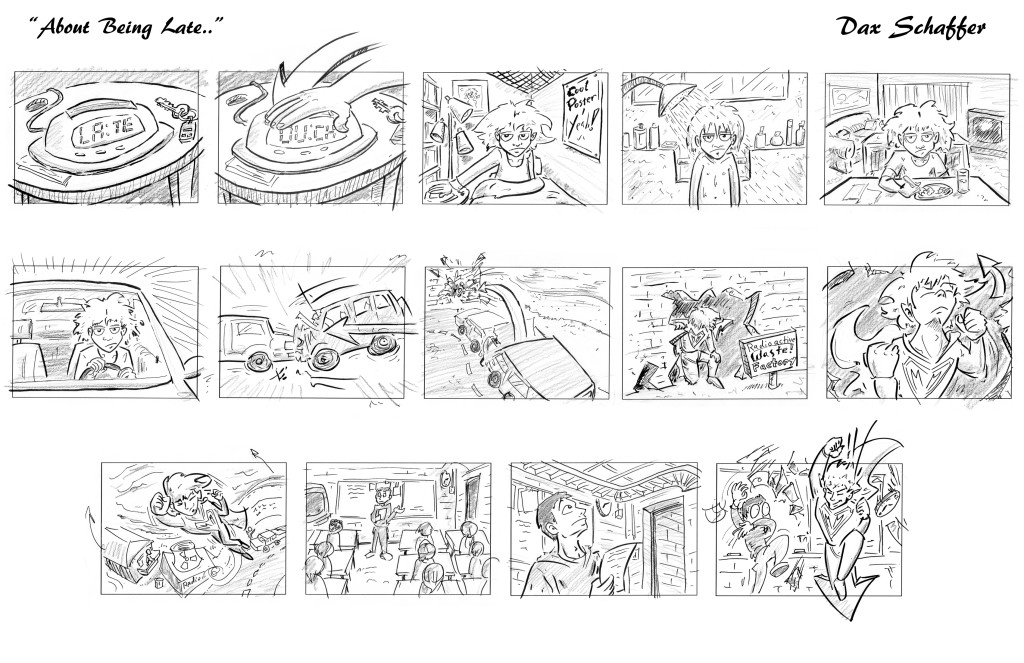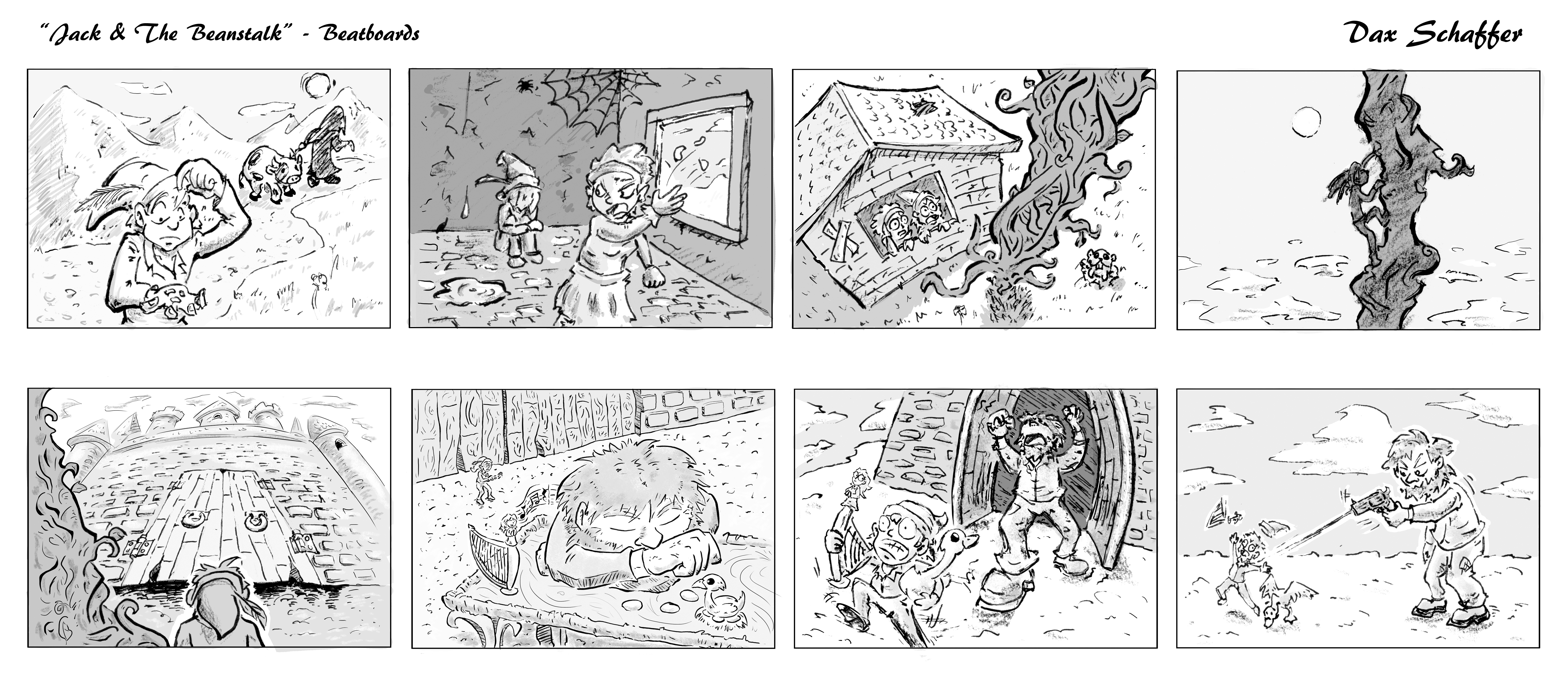By Dax Schaffer
All artwork courtesy of Dax Schaffer
Have an idea for a movie or music video? Even a script maybe? Here are some tips from artist extraordinaire Dax Schaffer on storyboarding for beginners:
1. Every project is different.
You can always break the rules when it makes sense to. Make sure to adjust yourself to the team and style around you. When working for a client, you are trying to accomplish something in their head as well as your own. Boarding helps visualize this for people who may sometimes not be as visually versed as yourself.
Be patient and remember that what you do is a specialized skill. Your goal is to communicate a vision so that other people can understand it before you or a team arrive at a finished product. Film—and especially animation—is expensive; that’s why we create a blueprint that can be easily changed.
2. Don’t just do talking heads.
And by talking heads I mean “medium wide” shots. Always think about camera placement and how it affects the emotion of the scene. Storyboredom is a great place to learn the basics of storyboarding.
3. Don’t get too attached to a board.
No need to overwork it. It’s a sketch, a blueprint to help you find your way to the finished product. So be okay with throwing out a scene if it isn’t working and starting anew. That’s the point of storyboarding.
4. Remember all the elements you are juggling as a board artist.
You are planning cinematography, acting, and sometimes designing characters/environments for the first time. You have to do it all well, so make sure you keep it all in the back of your mind. If you’re working in animation, this is especially true, and on some shows board artists are also used as writers (i.e., Fish Hooks, Steven Universe, Phineas & Ferb.)

5. Keep in mind depth.
You need to sell the fact that characters are existing in a believable space. In other words, know perspective (there is no way around this, you need to understand it). Changing placement of the different components of a composition can help create a stronger image too. Make sure there are foreground and background elements to enforce this. Place characters and the “camera” in a way that cutting back and forth makes sense (180 degree rule).
6. Have fun. Make sure you enjoy your work. If you don’t enjoy it, other people sure aren’t going to.
About Dax: Dax is a storyboard artist, animator, and illustrator living in Los Angeles. He is pretty tall and likes Dr. Who, maybe a little too much.
Other articles in the “Don’t Suck” series:
How to Make a Music Video That Doesn’t Suck
How to Make a YouTube Series That Doesn’t Suck






7. Don’t be afraid to push angles. When I started out, many of my first boards were too straight on, not enough from 3/4, or from a high/low perspective. Don’t be afraid to try and get more foreshortening from any angle. Try them out, you might like what you find.